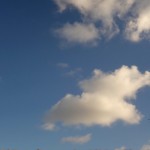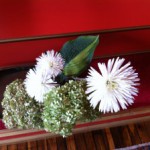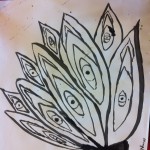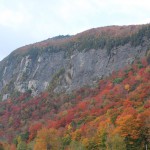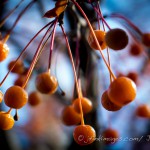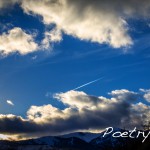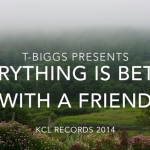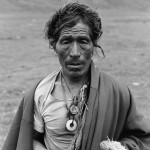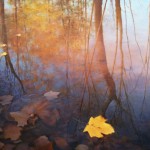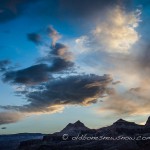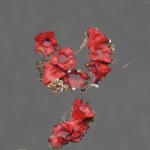Monday
Contemplative Art and Liberation—How it Works Part II
by John McQuade
The great Dharma Master Chögyam Trungpa Rinpoche presented the Buddhadharma and was the progenitor of the Shambhala teachings.
He also was a dharma or contemplative artist in disciplines such as Ikebana, calligraphy, poetry, theatre, photography, “elocution” and so forth. On various occasions he taught the principles and ways of Dharma Art. Some of these teachings are gathered in the book, True Perception.
One of the main points—perhaps the main point—of both the Buddhadharma and Shambhala Dharma ways is liberation: the shift from suffering to ease, self-obsession to compassion, discord to harmony, confusion to Wisdom, setting sun to Great Eastern Sun and so forth.
One might wonder why this great master would bother teaching Dharma Art. Is it an extra or something decisive and helpful as a liberation way? My experience is that these Dharma arts are not only intrinsically liberation ways, but they can act as a catalyst for the Buddhadharma and Shambhala liberation ways. Those ways become more effective, expressive and joyful.
Here is an excerpt of text from Chögyam Trungpa’s Shambhala: Sacred Path of the Warrior from chapter V: Synchronizing Mind and Body. This teaching is presented in three interrelated phases: teachings on synchronization, teachings on direct or true perception and teachings on fearlessness, human dignity and Great Easter Sun vision. This contemplation will focus on the second phase: direct perception.
First there is a little presentation on synchronization. Here the reference is to the synchronization of mind, body and world in contrast to what we often experience as a scattered, awkward and somewhat dysfunctional way with ourselves and the world.
One of the main points is that this capacity for synchronization is not an external imposition but rather a reconnection with our birthright human synchronization: “Synchronizing mind and body is not a concept or a random technique someone thought up for self-improvement. Rather, it is a basic principle of how to be a human being and how to use your sense perceptions, your mind and body together.”
So one of the decisive issues is how to “use your sense perceptions” as a way of synchronization. This is the second phase of the teachings.
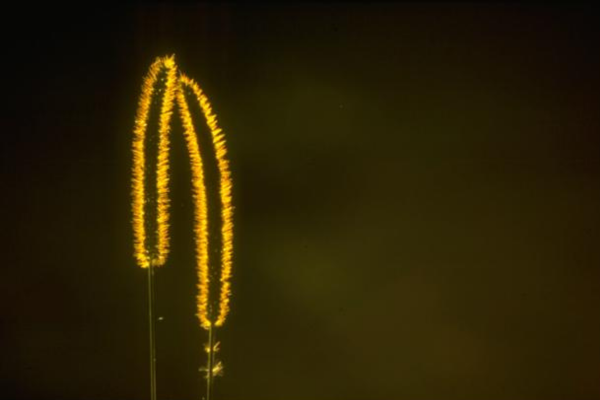
“Synchronizing mind and body is also connected with how we synchronize or connect with this world altogether. This has two stages which we call Looking and Seeing…it is somewhat easier to explain the process…in terms of visual perception.”
Then: “Looking is your first projection and if you have doubt…you feel shaky or anxious because you do not trust your vision…but the point is to look properly. See the colors: white, black, blue, yellow, red, green, purple. Look. You cannot not look. There is no other world. This is your world: it is your feast. You inherited these eyeballs; you inherited this world of color. Look at the greatness of the whole thing. Look! Don’t hesitate—Look! Open your eyes. Don’t blink, and look, look—look further.”
So this is how you do it. But how do you do it? This teaching is more of an experience description, a “pointing out” and an invocation. With all due respect it does not provide a practice/experience way.
Miksang contemplative photography provides a practice/experience way (there could be other practice ways as well).
Miksang is a Tibetan word that translates as “Good Eye.” In Shambhala terms it is the “eye or visual” way of Basic Goodness.
Miksang is a Tibetan word that translates as “Good Eye.” In Shambhala terms it is the “eye or visual” way of Basic Goodness.
Miksang asked the question: What is the visual? One could respond that the visual is what we see: what the visual sense registers/presents. What we see is everything that we see. Everything is a big and endless exploration. This is not workable as pedagogy. So we asked does the visual have features, components, elements and so forth. It turns out it does. Everything we see involves color, light, surface (our vision stops at a surface), space and we always see something in particular.

So the first phase—the Looking phase—of the Nalanda Miksang pedagogy and perception/expression training is to work through each of these visual elements. So the first assignment is to explore color as color. Then we explore light and the others.
Now we are embodying, expressing and manifesting Chögyam Trungpa’s teachings. We actually engage Looking as a real register experience. This is a liberation practice and experience. You are there with your direct visual experience. This is a first synchronization contact.
Then there is Seeing.“ You might see something which is the second stage—the more you look the more inquisitive you are, the more you are bound to see—and appreciate the world around you. It is a fantastic new discovery of the world. You would like to explore the entire universe.”
So, after establishing the first visual direct perception contact, the stage of Seeing involves the “inquisitive” “appreciation” and “exploration.” This is where Insight and Liberation ensue.
In Nalanda Miksang there are many contemplative exploration and insight ways. This is the main orientation of Nalanda Miksang. In general, they are presented through another Chögyam Trungpa teaching: Fields of Perception.
Here I am presenting some more basic and fundamental Nalanda Miksang Insight teachings. These are more rooted in the Looking phase of direct perception. The first assignment is “color as color.” Not a colorful thing like a balloon, a flower, or a fire engine. Our slogan is, “fire engine red not a red fire engine.”
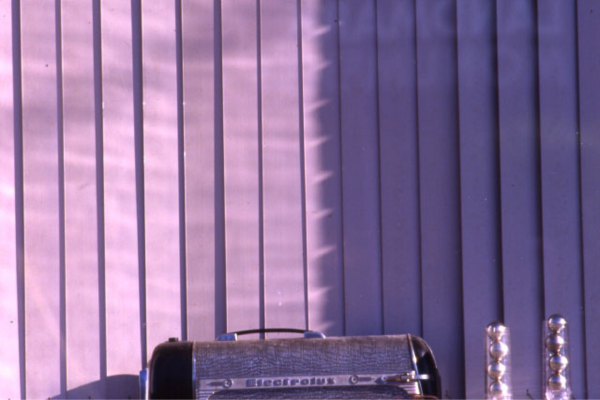
This has profound experience, implication and insight registrations. One of the features of this engagement is to discern the difference between the orientation to the “thing world” and the actual experienced appearance/phenomenal world. We actually first see a “fire engine” in terms of its colors, shapes, volumes and so forth. Notions like tires are conceptual additions. For example we cannot see the other side of the fire engine even though we “know it is there.”
This is the thing orientation. This is not exactly mistaken—it is part of our conceptual/pragmatic way of operating in our world. But it is not direct perception. Direct perception is the appearance/phenomenal manifestation. This is what we experience.
More so there is a co-presence of what we experience and the phenomenal manifestation. This is our direct perception contact. As Chögyam Trungpa says:
“There is no other world. This is your world; it is your feast.”
So the features of the appearance phenomenal world are the manifest ways of your experience. The way of appearances is fresh, fluid and free flowing. This means your experience is fresh, fluid and free flowing. This is a first step of contemplative liberation, it is never the “same old, same old.”
This Seeing/insight can run deeper and much deeper. Chögyam Trungpa notes the aspect of “appreciation.” Appreciation means to discern true value. To give a material example: if one wanted to know the value of a piece of jewelry one could go to an appraiser.
Here we are involved with the Wish Fulfilling Jewel: your life. These contemplative art practices are “appreciation ways.” Your life becomes more meaningful in the way that it is always already meaningful. This is everyday liberation.
Then there is the deep liberation insight into the way of reality manifestation. In terms of the Buddha Dharma one would contemplate how the contemplative break from the “thing orientation” to the phenomenal manifestation resonates with a basic teaching such as the Heart Sutra Emptiness/Form.
Here we will stay with this Chögyam Trungpa text. In the Looking section of the text he presents some Insight teachings:
“You inherited this; you inherited these eyeballs: you inherited this world of color.”
Here there is a pointing to the link of the primordial with the phenomenal. We are born with the capacity of vision that opens the visual world. It is a birthright miracle. It does not depend on any conditioned circumstance—other than being born as a human. It does not depend on your gender, your age, your ethnicity, whether you are rich or poor and so forth.
So there is a deep connection between this primordial miracle birthright and each every day, every moment perception way of being in the world. This realized connection is deep liberation.
We have to be kind and reasonable here. This is not a judgment. Our lives are demanding and the “thing world” is a big part of our ongoing orientation. However, it is not our whole world or even our basic experience world. So it is a matter of shifting our allegiance more and more as much as we can and mixing this into the appreciation of our everyday life. This is contemplative liberation. And a special feature of contemplative liberation is that it can be easily integrated with our everyday lives. Indeed, our everyday lives become the way of contemplative liberation.
In the third phase of this text Chögyam Trungpa links this direct perception engagement to the way of everyday warriorship:
“You can see on the spot with wakefulness. Your eyes begin to open…you can see the world is colorful, fresh and free…fantastic…in that way, synchronization of mind and body is also connected with fearlessness…here fearlessness means being able to respond to accurately to the phenomenal world…you begin to realize that you have a perfect right to be in the universe…you have looked and you have seen…this discovery is the first glimpse of what is called the Great Eastern Sun…the dawning or awakening of human dignity—the rising of human warriorship.”
Entries filed under Arts and Poetry
Fragile Ego – HIGHLIGHT
COLUMN: Celebrating the Arts On Writing by Michelle Welch, Phoenix If you’re a writer and you’re trying to do anything but self-publish exclusively, you’re going to have to face rejection. My first agent hunt involved 8 rejection letters; my second, four. I have a raft of rejections from years ... continuePosted December 12, 2014 by
Kado: Being Quiet and Doing Something! – HIGHLIGHT
One of Marcia Shibata’s offeringsCOLUMN: Celebrating the Arts by Jacqueline Larson, Toronto, Ontario, Canada More than knowing a thing or two about flowers, Marcia Wang Shibata knows her own mind — but then, she’s been following the way of flowers for a long time. Ms. Shibata, a Master ... continuePosted December 8, 2014 by
Compassionate Brush – HIGHLIGHT
A student’s tone drawing of a lotusContemplative Art Project with the Vancouver School Board article, photos and video by Brian Callahan On October 21st, His Holiness XIV Dalai Lama visited a Vancouver high school to dialogue with students on the importance of educating the heart as well as ... continuePosted November 23, 2014 by
A Night Room – HIGHLIGHT
COLUMN: Poetry Space Autumn Edition We’re delighted to share more new work from across the sangha. Below are four pieces from two poets who are both new to Poetry Space. Also, don’t forget our Winter Haiku contest – all entries due by December 21. Email your entries to ... continuePosted November 21, 2014 by
First Annual Midwinter Haiku Contest – HIGHLIGHT
Request for Entries from the Poetry Editorial Board for the Shambhala Times if I held it in my hands my hot tears would melt it — autumn frost ~~ basho 1684 As we write this, the days are fast growing shorter, the ... continuePosted November 19, 2014 by
The Last Breath of Summer – HIGHLIGHT
COLUMN: Poetry Space Summer in the land of Shambhala is a time for retreat and practice, for family, for play and yes, for work. Below are our selections for the final Poetry Space of the summer. CALL FOR SUBMISSIONS – as the season turns, dust off the pen, ... continuePosted September 12, 2014 by
Everything is Better…with a Friend – HIGHLIGHT
And now, for a little dose of humor…. Karme Choling retreat center in northern Vermont brings you the next in a growing series of music videos. “Everything Is Better With A Friend” features sangha member “T-Biggs” with additional vocals by Alex Vlasic and Adrienne Kehn; camera work ... continuePosted September 7, 2014 by
Landscape as Sacred Map – HIGHLIGHT
Pilgrim, TibetAnnouncing a New Book Release A Photographic Journey into the Heart of the Himalayas by David Zurick, Berea, Kentucky In 2004 I began traveling in the Himalaya and Tibet with a large-format camera and sheet film to make black-and-white photographs of sacred places in the region: monasteries, shrines, ... continuePosted September 3, 2014 by
Making Music Mindfully – HIGHLIGHT
COLUMN: Celebrating the Arts Intercultural Improvisation with the OMG by Alex W. Rodriguez, Los Angeles Since taking up the trumpet at age ten — and the trombone two years later — my life as a musician has taken some interesting turns. None of them, however, has been as exciting ... continuePosted August 30, 2014 by
Listening in Color – HIGHLIGHT
COLUMN: Celebrating the Arts article and painting by Christine Labich, Western Massachusetts The inspiration arrived on a late afternoon in October. The New England hardwoods were blazing against a blue sky, and I was standing on the muddy bank of a small brook. Decaying leaves pushed up against ... continuePosted August 23, 2014 by
“This time, Just Enjoy!” – HIGHLIGHT
Relaxation and the Practice of Ikebana article by Pam Rubin photos by Liza Matthews Watanabe Sensei turned ninety this past year, and after a four-year absence from her annual visits, Kalapa Ikebana invited her to visit Halifax again, without any expectations. Soon the good news spread: Sensei would ... continuePosted July 18, 2014 by
Come, Come and Dance… – HIGHLIGHT
COLUMN: Poetry Space Coordinator’s Note, from Jeff Fink: One afternoon, in the lower living room at Karme Choling, I picked up a book that had been left on the coffee table; it was Smile of the Tiger, the first of the Sakyong’s books of poetry. With some ... continuePosted July 7, 2014 by
Lessons Learned from Being Underwater – HIGHLIGHT
BoseARTS COLUMN Finding Balance in a Contemplative Life by Julie Dubose Recently, I had the great pleasure of returning to Royal Roads University in Victoria, B.C. with Michael Wood to teach Opening the Good Eye and Making Contact, the first two courses in our contemplative photography curriculum. We felt ... continuePosted June 16, 2014 by
Meditation and Irony – HIGHLIGHT
COLUMN: Celebrating the Arts by Michelle Welch, Phoenix I’m a writer, for those who don’t already know. There’s a big dichotomy between being a writer and being a meditator, namely that writing requires you to be stuck in your head, conceptualizing everything, nearly all the time. continuePosted June 9, 2014 by
Reopening: Poems for Spring – HIGHLIGHT
COLUMN: Poetry Space We’re very excited to publish this month’s selections, three pieces that share a real sense of space – perfect for the season, we think. Oh, and we’re working on a small surprise for our next piece, so stay tuned. SEND US ... continuePosted May 28, 2014 by
![]() RSS feed for the Arts and Poetry category
RSS feed for the Arts and Poetry category
View all posts from authors in Arts and Poetry: Jillian_Johnson


